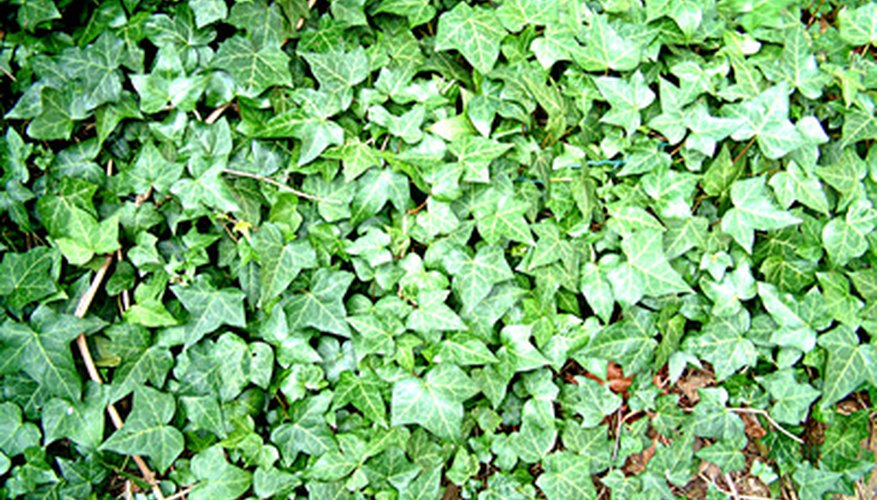Whether it's grown as a ground cover or a climbing vine, ivy provides lush greenery to the landscape. Unfortunately, ivy isn't immune to disease. Disease susceptibility depends on the specific variety of ivy, but some common diseases affect most ivies. Identifying the infections provides the necessary knowledge for stopping its spread.
Leaf Spots
Several leaf spot diseases affect ivy foliage. Xanthomonas or black spot causes water-soaked, black spots to form on leaves. The spots enlarge and spread, eventually killing off the foliage. Colletotichum produces brown spots that quickly spread from plant to plant via spores. While some fungicides do combat these diseases, they may have a negative effect on the ivy. Removing affected foliage as soon as it is noticed helps prevent the spread of lead spot. Leaf spots thrive in humid conditions, so watching plants closely when the weather is warm and moist allows you to stop an infection before it has a chance to spread.
- Several leaf spot diseases affect ivy foliage.
- Xanthomonas or black spot causes water-soaked, black spots to form on leaves.
Powdery Mildew
Powdery mildew can affect any plant, but ivies are susceptible because their prime growing conditions are the same as those for this mildew. Powdery mildew thrives in moist, cool and shaded areas, just like ivy. The fungus begins as a grey or white powdery residue on leaves, then quickly spreads to other areas of the plant. Removing infected leaves helps prevent the spread. Remove old leaves and garden debris from ground cover ivy regularly, as mildew spores may spread through the old plant matter.
- Powdery mildew can affect any plant, but ivies are susceptible because their prime growing conditions are the same as those for this mildew.
- Powdery mildew thrives in moist, cool and shaded areas, just like ivy.
Botrytis Blight
Botrytis blight can kill an entire bed of ivy in a single summer. The disease begins on the foliage, causing brown lesions and fuzzy spots to form. The leaves decline and die as the infection spreads, until the ivy can no longer support itself. Botrytis blight thrives in unkempt beds, so removing old leaves and plant material regularly helps prevent the disease. High humidity also leads to a greater likelihood of infection. Pesticides are available for this disease.
- Botrytis blight can kill an entire bed of ivy in a single summer.
- Botrytis blight thrives in unkempt beds, so removing old leaves and plant material regularly helps prevent the disease.
Root Rot
Root rots may not be apparent until the infection spreads to foliage or the ivy begins to decline. Fusarium rot causes plants to wilt, and stems may break off near the soil surface. It quickly spreads to healthy plants via small spores. Destroying affected plants helps prevent the spread, but a fusarium fungicide is necessary to completely eradicate the disease.
- Root rots may not be apparent until the infection spreads to foliage or the ivy begins to decline.
- Destroying affected plants helps prevent the spread, but a fusarium fungicide is necessary to completely eradicate the disease.
